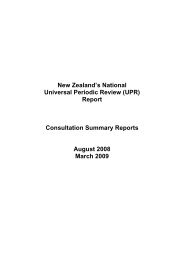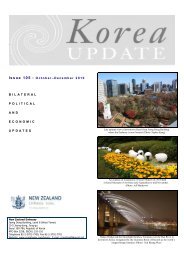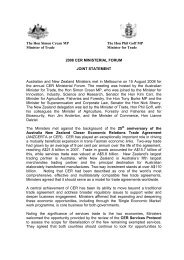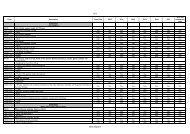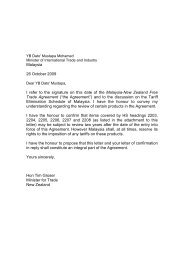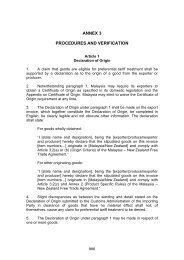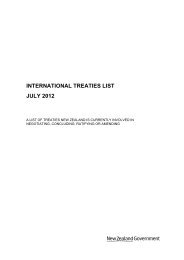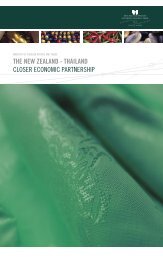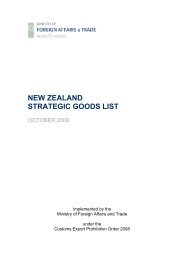Speech by John Adank, NZ
Speech by John Adank, NZ
Speech by John Adank, NZ
You also want an ePaper? Increase the reach of your titles
YUMPU automatically turns print PDFs into web optimized ePapers that Google loves.
� Trade Ministers defined the broad outlines of a deal and this was endorsed <strong>by</strong><br />
Leaders. It represents the base from which the negotiations will proceed.<br />
� There is a lot of difficult work still to do in order to overcome the sensitivities in<br />
the negotiation, but the broad outlines agreed in Honolulu are an important<br />
milestone in that process.<br />
� As we enter this more intensive phase of the negotiations, every participating<br />
economy has committed to delivering a high quality, comprehensive outcome<br />
in TPP.<br />
� At the Honolulu meeting, Leaders also directed negotiators to finalise the TPP<br />
agreement this year. That is an ambitious timetable, but nonetheless one to<br />
which the group is working to deliver on.<br />
� The eleventh negotiating round took place in March in Melbourne, Australia.<br />
Subsequent rounds will be held at six to eight week intervals during the year.<br />
Many of the individual working groups have also been meeting<br />
intersessionally in order to maintain the momentum.<br />
� While we are aiming for a 21 st century trade agreement – there remain some<br />
outstanding issues from the 2oth century trade agenda. It is important to<br />
appreciate therefore the commitment in the TPP Trade Ministers’ Report<br />
(endorsed <strong>by</strong> Leaders in Honolulu) to eliminate tariffs and other barriers to<br />
trade, with the goal of “comprehensive duty free access to each other’s goods<br />
markets”.<br />
� All of the TPP negotiators understand that this will not be easy. This is the<br />
political challenge facing TPP members. WTO-consistent transitional<br />
arrangements will be necessary.<br />
� With respect to the sensitive agriculture sector, it may well take a decade to<br />
allow for gradual and progressive liberalisation. But “elimination” of tariffs is<br />
the aim.<br />
� I wanted to comment here on New Zealand’s dairy objectives in the TPP and<br />
related contexts, which we know is a topic of interest to the agriculture sector<br />
here in Mexico.<br />
� There are a number of realities about this which are not well understood:<br />
New Zealand is a small producer of dairy products. We produce only 2.5 per<br />
cent of world milk, which is equivalent to the same amount that the Indian<br />
state of Uttar Pradesh produces. There is scope to increase production. Our<br />
exports could therefore increase <strong>by</strong> around 2-3 per cent per annum. Based<br />
on these projections, New Zealand could produce another 4 to 7 million<br />
tonnes of wholemilk equivalent <strong>by</strong> 2025.<br />
� But that increase in production is far outstripped <strong>by</strong> the projected growth in<br />
demand for milk – especially from the likes of China and India. New Zealand<br />
will not be flooding TPP dairy markets. There is a great future for all dairy



